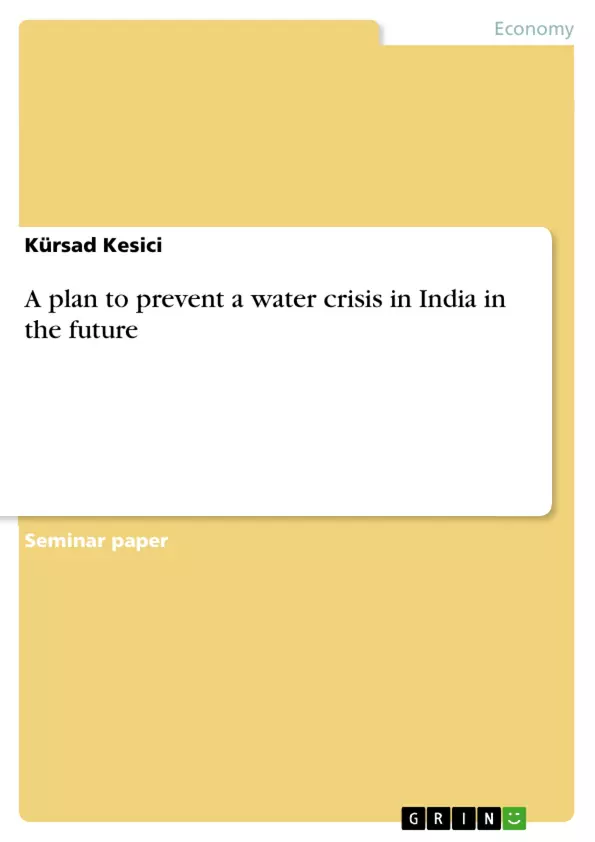This term paper analyzed the attitude of India on water resources and needs in relation to industrial countries including the current state of water resources in the world. The comparative point of views between Austrians and Indians, based on the conducted survey of February 2012, should be analyzed. Relationships and impacts of the water scarcity should be drawn. Necessary steps for preventing a water crisis in the next thirty years in India will be considered and presented.
In the chapters, the basics and a state of the art for the resource water will be reflected. A little view in the future will help to build conclusions for a possible way to avoid water stress in India. The author asked many students in Austria and India to the topic of water resources and sustainability.
Which are the top three resources that will impact the business development of India? The answers were water, energy and agricultural land and by the Austrians energy, steel and at the last water.
Inhaltsverzeichnis (Table of Contents)
- Introduction
- Problem Description
- Purpose
- Conceptual Definition and Demarcation
- The Global and Indian Water Situation
- UN Water Development Report
- Drivers of the Water Usage
- The Agricultural Water Consumption of India
- Industrialization and the Water Consumption of India
- Poverty, Education, Culture and Values
- India's Water Footprint
- Public and Private Partnerships for Water
- Water Policy of India
- The Water Wars of India
- The Comparison of Austrian and Indian's
- Conclusion
- Adjusting the Policies
- Reengineering of the Irrigation Sector
- Adapting Best Practices in Farming
- Three Pillars of Sustainable Developing
- Bibliography
Zielsetzung und Themenschwerpunkte (Objectives and Key Themes)
This term paper examines India's approach to water resources and its needs in comparison to industrial nations, considering the global water situation. It analyzes the perspectives of Austrians and Indians through a survey conducted in February 2012, exploring the relationships and impacts of water scarcity. The paper then focuses on identifying and presenting necessary steps to prevent a water crisis in India over the next thirty years.
- The global water scarcity and its impact on India
- The drivers of water usage in India, including agricultural and industrial consumption
- The role of poverty, education, and cultural values in water consumption patterns
- The comparison of water resource management practices in Austria and India
- Strategies for preventing a water crisis in India in the future
Zusammenfassung der Kapitel (Chapter Summaries)
The paper begins by outlining the global water crisis and highlighting the specific challenges facing India. It explores the United Nations Water Development Report, emphasizing the increasing demand for water resources due to population growth, economic development, and urbanization. The paper delves into the factors driving water usage in India, including agricultural, industrial, and societal influences. It also examines the concept of India's water footprint and the potential for public-private partnerships in water management. The paper further explores India's water policy and the potential for conflicts over water resources. Finally, it analyzes the comparative perspectives of Austrians and Indians on water management, laying the groundwork for potential solutions.
Schlüsselwörter (Keywords)
The paper focuses on key concepts such as water scarcity, water management, agricultural consumption, industrialization, poverty, education, cultural values, water footprint, public-private partnerships, water policy, water conflicts, and sustainable development.
- Quote paper
- Kürsad Kesici (Author), 2012, A plan to prevent a water crisis in India in the future, Munich, GRIN Verlag, https://www.grin.com/document/381284



